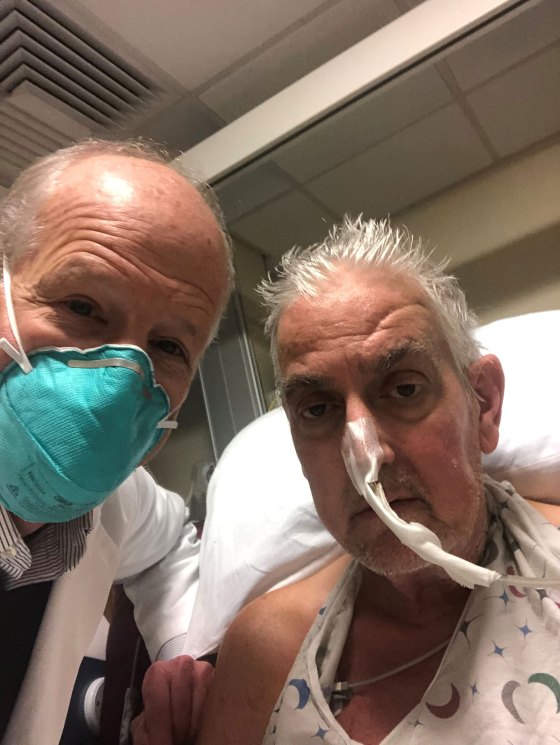[ad_1]
In a medical premiere, medical doctors transplanted a pig’s coronary heart to a affected person in a last-ditch effort to save lots of his life, and a Maryland hospital stated Monday that he was advantageous three days after the extremely experimental surgical procedure.
Whereas it is too early to know if the surgical procedure will actually work, it’s a step in a decade-long quest to in the future use animal organs for life-saving transplants. Medical doctors on the College of Maryland Medical Heart say the transplant confirmed {that a} coronary heart from a genetically modified animal can perform within the human physique with out rapid rejection.
The affected person, David Bennett, 57, knew there was no assure the experiment would work, however he was dying, not eligible for a human coronary heart transplant, and had no alternative, his son instructed the Related Press.
[time-brightcove not-tgx=”true”]
“It was both dying or doing this transplant. I wish to dwell. I do know it is a shot at the hours of darkness, nevertheless it’s my final alternative, “Bennett stated the day earlier than surgical procedure, based on a press release from the College of Maryland Faculty of Drugs.
There’s a big scarcity of human organs donated for transplants, which is main scientists to determine learn how to use animal organs as a substitute. There have been simply over 3,800 coronary heart transplants within the U.S. final 12 months, a report quantity, based on the United Community for Organ Sharing, which oversees the nation’s transplant system.

“If this works, there might be an infinite provide of those organs for struggling sufferers,” stated Dr. Muhammad Mohiuddin, Scientific Director of the College’s Animal-to-Human Transplant Program.
However earlier makes an attempt at such transplants – or xenografts – have failed, primarily as a result of the affected person’s our bodies rapidly rejected the animal organ. In 1984, Child Fae, a dying baby, lived with a baboon coronary heart for 21 days.
The distinction this time round: The Maryland surgeons used a gene-edited coronary heart from a pig to take away a sugar in its cells that’s accountable for this hyper-rapid organ rejection.
“I feel you may name it a turning level,” stated Dr. David Klassen, UNOS Chief Medical Officer, on the transplant in Maryland.
Nonetheless, Klassen warned that this was only a first preliminary step to research whether or not the xenotransplant might lastly work this time.
The Meals and Drug Administration, which oversees xenotransplant experiments, has accepted the operation beneath a compassionate use allow, which is offered when a affected person with a life-threatening situation has no different choices.
Simply final September, researchers in New York performed an experiment that prompt these sort of pigs would possibly present promise for animal-to-human transplants. Medical doctors briefly connected a pig kidney to a deceased human physique and watched it start to work.
The Maryland transplant takes their experiment to the following degree, stated Dr. Robert Montgomery, who led this experiment at NYU Langone Well being.
“This can be a really outstanding breakthrough,” he stated in a press release. “As a coronary heart transplant recipient, even with a genetic coronary heart situation, I’m thrilled with this information and the hope it offers to my household and different sufferers who will finally be saved by this breakthrough.”
Will probably be essential to share the information gathered on this transplant earlier than opening the choice to extra sufferers, stated Karen Maschke, a analysis scientist on the Hastings Heart who helps make moral and coverage suggestions for the primary medical trials within the body a grant from the Nationwide Well being Institute.
“With out this info, it might not be advisable to hold out an animal-to-human transplant,” stated Maschke.
The operation final Friday at Baltimore Hospital took seven hours.
“He understands the greatness of what has been achieved and the significance of it,” stated David Bennett Jr. of his father. “He could not dwell, or he might survive a day, or he might survive a couple of days. I imply, at this cut-off date we’re within the unknown. “
__
AP Medical Author Lauran Neergaard contributed to this.
[ad_2]







































Discussion about this post